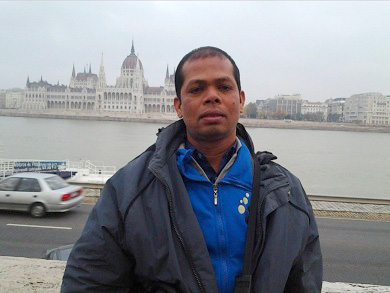The Javanese War: Prince Diponegoro and the Legendary Rebellion Movement against the Dutch Colonial Regime
Abstract
In the Kasunanan of Yogyakarta, the Diponegoro War took place from 1825 to 1830. A central figure in the incident, namely, Prince Diponegoro, took the name of this war. Unlike the life of royal princes in general, Prince Diponegoro did not spend his time in various pleasant and luxurious forms of life. The Prince of Diponegoro had been living outside the palace since a young age and was busy deepening various understandings, including deepening the Islamic teachings. His personal life reflects a type of life filled with piety and misticism, due to this way of life and a lot of contact with Ulama. Even the prince was known as Ksatria-ulama by the observers. As someone overflowing with piety and modesty in practice. Then when he led the revolution against the Dutch colonial government, there were many expectations and perceptions associated with the movement. There were a number of hopes raised on the shoulders of Prince Diponegoro, in accordance with the circumstances at that time when the group was in a difficult position, oppressed both in the social, political and economic fields due to various colonialism. From this dream, then, Prince Diponegoro adhered to the character of Mahdism, that is to say, the dream of a future full of prosperity, stability and tranquility, both in social, political and economic life. From this, the meaning emerged that the Diponegoro War was a movement known as mahdism.
Keywords
Full Text:
PDFReferences
Benda, Harry J. (1989). "Christian Snouck Hourgronje dan Landasan Kebijakan Belanda terhadap Islam di Indonesia", dalam Ahmd Ibrahim dkk. (ed.), Islam di Asia tenggara: Perspektif Sejarah. Jakarta: LP3ES
Bogaerts, Els. (2016). The installation of Prince Mangkubumi- Performing Javanese history. Wacana, Jurnal Ilmu Pengetahuan Budaya, 17, (3), 2016: 473-505. DOI: http://dx.doi.org/10.17510/wacana.v17i3.456
Carey, P. (1986). Asal-usul Perang Jawa, Pemberontakan Sepoy dan Lukisan Raden Saleh. Jakarta: Pustaka Azet
Carey, P. (1987). "Satria and Santri: Some Notes on the Relationship between Dipanegaras's Kraton and Religious Supporters during the Javanese War (1825-1830)", In Dari Babad dan Hikayat Sampai Sejarah Kritis.Yogyakarta: Gajah Mada University Press.
Chon, N. (1984). "Millenarisme Zaman Pertengahan: Hubungannya dengan Studi Komparatif Gerakan-Gerakan Millenarian", In Sylvia Thrupp (ed.), Gerakan Kaum Mahdi. Bandung: Pustaka
Korver, A.P.E. (l985). Sarekat Islam: Gerakan Ratu Adil, Jakarta: Grafiti Pers.
Kurniadi, Bayu Dardias. (2019). “Defending the Sultan's Land: Yogyakarta, Control over Land and Aristocratic Power in Post-Autocratic Indonesia”. [A Thesis]. Doctor of Philosophy of the Australian National University.
Masri, H., Suprayitno, and Ratna. (2018). War Strategy Done by Gayo and Alas People Against Dutch Colonial (1901-1912). Budapest International Research and Critics Institute-Journal (BIRCI-Journal), P. 25-39.
Memory of the World Register. (2012-49). Babad Diponegoro or Autobiographical Chronicle of Prince Diponegoro (1785-1855). A Javanese nobleman, Indonesian national hero and Pan-Islamist. (Indonesia and the Netherlands).
Nasution, H. (1973). Filsafat dan Mistisisme dalam Islam. Jakarta: Bulan Bintang.
Nuruddin, A., et al. (2019). Relationship of Interfaith in Tunisia (Critical Study of Ibn ‘Ashur Tafsir W.1973). Budapest International Research and Critics Institute-Journal (BIRCI-Journal), P. 353-372.
Sigmund. M .D. (1984). Pangeran Diponegoro. Jakarta: Bhratara Karya Aksara.
Soekanto, (1952). Sekitar Yogyakarta 1755 1825 (Perjanjian Giyanti – Perang Diponegoro). Jakarta: Mahabarata
Surjo, Djoko. (1991). Kepemimpinan Pangeran Diponegoro dalam Perspektif Sejarah. Jurnal Humaniora, (2) 1991: 42-53, DOI: https://doi.org/10.22146/jh.2091.
DOI: https://doi.org/10.33258/birci.v3i4.1350
Article Metrics
Abstract view : 785 timesPDF - 550 times
Refbacks
- There are currently no refbacks.

This work is licensed under a Creative Commons Attribution-ShareAlike 4.0 International License.

This work is licensed under a Creative Commons Attribution-ShareAlike 4.0 International License.

_.gif)

















_.gif)



